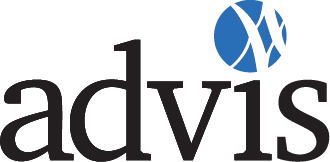The Office of Inspector General’s recent audit put a spotlight on swing-bed reimbursements at Critical Access Hospitals (CAHs), revealing billions in potential Medicare savings if payments were aligned with lower Skilled Nursing Facility (SNF) rates. With 87% of CAHs located near alternative SNF options, heightened scrutiny is inevitable—and the financial implications could be significant. Now more than ever, hospitals must take a proactive, data-driven approach to justify swing-bed utilization and safeguard reimbursement.
The Costly Problem with Swing-Bed Payments
Medicare is spending billions on swing-bed services at Critical Access Hospitals (CAHs). A recent Office of Inspector General (OIG) audit revealed that Medicare could have saved up to $7.7 billion over six years if CAH swing-bed reimbursements matched those of Skilled Nursing Facilities (SNFs).
Here’s the issue: CAHs are paid 101% of their reasonable costs for swing-bed services, while SNFs are reimbursed at a fixed Prospective Payment System (PPS) rate—a much lower amount. The audit found that 87% of CAHs had alternative SNF facilities within 35 miles, yet they continued receiving higher reimbursements.
Despite this, the Centers for Medicare & Medicaid Services (CMS) has pushed back against any changes, arguing that adjusting these payments could threaten rural healthcare access. So, what’s the right move? Let’s break it down.
What Are Swing-Bed Services and Why Do They Matter?
First, a little context. Swing beds allow hospitals, particularly in rural areas, to switch beds between acute care and skilled nursing care as needed. CAHs were established to provide accessible healthcare for rural communities, and swing beds help them offer post-acute care without requiring patients to transfer to a nursing home.
However, the payment model is outdated. Instead of reimbursing CAHs based on a standardized rate like SNFs, Medicare pays 101% of costs, leading to substantially higher daily reimbursements. Here’s what the numbers show:
- Average daily payment for CAH swing-bed services in 2020: $1,845.69
- Average daily payment at an SNF for the same care: $343.67
- Increase in swing-bed usage from 2015-2020: 2.8%
- Increase in average reimbursement per day during the same period: 16.6%
That’s a fivefold price difference for essentially the same care.
The Debate Over Cost vs. Access
The OIG report makes one thing clear: Medicare is spending too much on CAH swing-bed services, and shifting to SNF rates could save billions. But there’s a catch—CMS strongly disagrees with implementing this change.
OIG’s Argument:
- Most CAHs are near alternative facilities that could provide the same care at a lower cost.
- Medicare could save up to $7.7 billion over six years by reimbursing CAHs at SNF rates.
- Patients wouldn’t see a decline in care quality since SNFs provide comparable services.
CMS’s Counterargument:
- Rural hospitals depend on swing-bed reimbursements to stay financially viable.
- Reducing payments could force closures, limiting healthcare access for rural residents.
- OIG’s audit didn’t factor in patient acuity or transportation costs, which could affect the real savings estimate.
So, who’s right? The reality is somewhere in the middle. The key is finding a balance between reducing unnecessary spending and maintaining rural healthcare access.
Assess the Current State of Operations for your CAH or SNF.
Knowing this is already on the OIGs radar, what options exist for your hospital or healthcare system:
- Has there been an audit of swing bed utilization and medical necessity for both internal and external services?
- Does the current market area support more then one venue of care?
- What SNF services exist within 35 miles of the CAH?
- What is the financial impact of re-classifying beds? What is the process? How would that process negatively impact current and future financial strength?
- What joint ventures may be possible for improving access to care within the community?
Final Thoughts
Medicare spent billions of dollars on swing-bed payments at CAHs, despite lower-cost alternatives being available. While rural hospitals play a critical role in healthcare access, a one-size-fits-all reimbursement model is clearly being debated.
The question isn’t whether change is needed—it’s how to implement it without putting rural hospitals at risk. What do you think? Should Medicare move to a more cost-effective payment system, or is maintaining rural hospital funding more important?
Let’s keep the conversation going and see how Advis can supply your hospital or healthcare system with the tools it needs to navigate CAH swing beds and SNF services.
For nearly 40 years, we’ve helped healthcare organizations navigate complex regulations, unlock new revenue opportunities, and enhance operational performance—with over $1 billion in revenue enhancements and $475 million in cost savings to date. If your CAH relies on swing-bed revenue, let Advis deliver the strategic guidance, compliance insight, and proven expertise you need to protect your bottom line—and your mission.
Published May 1, 2025





